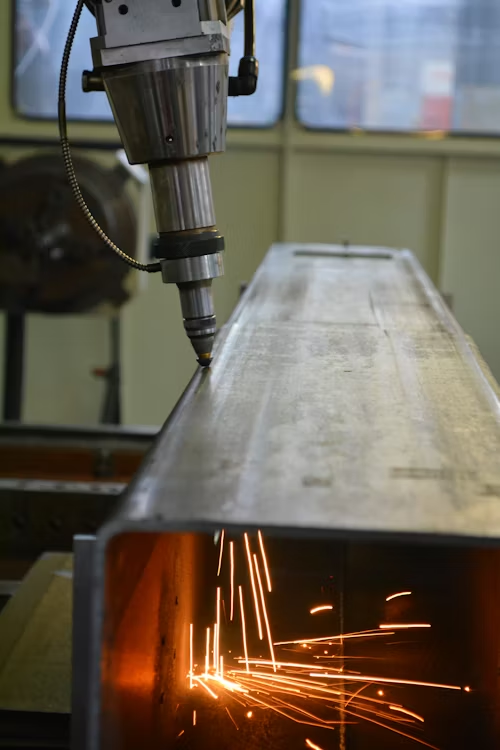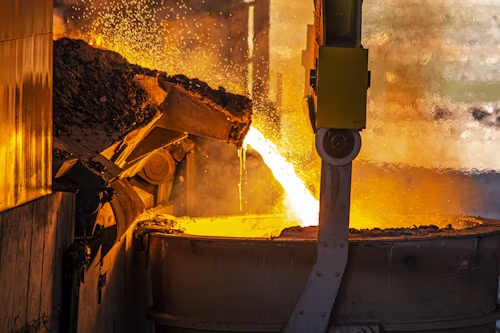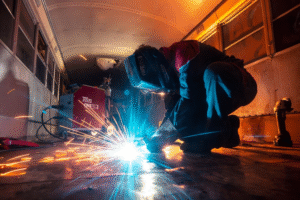Processing is the main part of the material industry. In this process, raw materials are converted into the required shapes for practical purposes. Quality control is also a crucial factor, as even minor errors in cutting and alignment can significantly impact the quality and overall final assembly.
The main purpose for using quality contractors for maintain accuracy, safety, and consistency. The best solution for this purpose is a smart sensor. These sensors are configured with automation and data systems to convert working areas into smart industries, providing increased efficiency. Let’s discuss and examine four roles of smart sensors in quality control and how to make the most of them.
Dimensional Accuracy Monitoring
- It is important to check and verification of making component dimensions to ensure they meet to design features and the defined tolerance.
- Take steel fabrication as an example; minor changes in plate and beam joint dimensions affect safety factors.
- So smart sensors can manage these factors. Laser scanners and 3D vision systems help to make fabricated parts in real time and get high-quality data over surface components.
- As a result, get the final assembly that matches the design specs.
- Engineers can make smart sensors through direct configuration of cutting and welding machines.
- For example, CNC plasma (“Computer Numerical Control” plasma) or laser cutters that come with smart sensors can prevent misalignment by automatically adjusting cutting paths.
- like this, incorporate sensors into robotics welding stations. that can fine-tune joint connections before applications. that the main features are as
- Less human error
- Minimized scrap material
- Shortened production cycles
- Higher structural reliability
- Boosted competitiveness.
Weld Quality Assessment
Welding is one of the most important processes in material joining. High weld quality defines product quality and durability, and subpar welding causes structural damage.
but some errors, like porosity, incomplete fusion, and cracks, are not visible to the naked eye. Here are some smart sensors that can help:
- Ultrasonic sensors transmit sound waves through the weld to identify inconsistencies.
- Thermal sensors help to measure temperature distribution at the time of the welding process to ensure that the heat input is required and smooth.
- Acoustic emission sensors sense high-frequency sound waves transmitted during welding faults and cracks.
- Infrared sensors and cameras recorded the heat profile of the weld pool and surrounding materials to make sure the cooling rate was within safe limits. This avoids bitterness and residual stress in the welding joint.
Also, we can maximize smart sensor features through integrating with the automated welding system through given sensor data in control software for fixing errors. that comes with speed variation of arc, voltage, and heat level for avoiding defects.
Engineers can find patterns since this data is logged with time, helping to refine the process. Proper monitoring causes continuous enhancement and helps to increase operational efficiency as you go.
3. Surface Defect Detection
- Material surface finish impacts functions and value in industries. Irregularities such as dents, scratches, and patches make the material not good and weaken the structure.
- Conventional inspection techniques fall short due to their inconsistent and time-consuming nature.
- A smart optical sensor can manage it. High-vision cameras and machine vision methods scan the complete surface and find errors that are visible. They do this in real time, providing the best replacement for manual inspection.
You can use these sensors when rolling metal sheets, machining parts, and manufacturing automotive panels to make fault-free surfaces. Here are four steps companies can take to maximize the benefits of smart optical sensors:
Integrate into production lines:
- Put the sensor directly on the line so inspection does not affect or disrupt workflows.
Classify defects automatically:
- Use system features for solving errors according to type. This data is also used to make sure reworking or scrapping parts is done immediately.
machine learning:
- finding patterns causing errors with the help of inspection data
Apply proactive adjustments:
- These details are used for reducing further faults. that make working effective.
These will result in an improvement in product quality and reliability. Consequently, you can reduce waste, save costs, and boost customer satisfaction.
4. Load and Stress Monitoring
All parts face high forces during the operational lifetime. Engineers must get ideas for production effects for different loads. That factor provides high safety and a durable design that helps to check components working during high loads and impacts. Some smart sensors are working as
- Strain gauges measure small variations in material deformation when a load is applied. It helps when materials are close to the load limit.
- Accelerometers measure motion and acceleration for monitoring vibrations and dynamic stress for rotating machines.
- Vibration sensors recorded oscillations that resulted in fatigue, imbalance, and misalignment. It found early damage signs and resulted in timely intervention.
- Piezoelectric sensors transform mechanical stress into signals to monitor impact forces and dynamic pressure variations.
- Fiber optic sensors measure strain, temperature, and pressure using light signals. These are preferred for harsh environments where traditional sensors do not work.
must note that the sensor must be connected during real-time use in the field. This helps to provide predictive maintenance and helps to replace parts before damage. Get the aerospace and vehicle industry for a practical example. Engineers connect parts with wireless strain centers to provide working updates. results in reduced downtime and high-cost damage.
Combining sensor data with simulation software can also go a long way here. This software gives data to the design model for increasing further product production. finally make a connection gap between design and real-world working performance for high quality in each step
Endnote
- Smart sensors are important tools for providing quality control in materials processing. This feature helps for getting reactive inspection for proactive monitoring with low cost and working. so main features are obtained when manufacturers configure sensors over the complete working life. This is the method by which we can get continuous improvement and predictive maintenance. Read the points above to expand understanding of smart sensors and maximize their application in material processing.








